A new survey of 15,278 religious congregations across the United States confirms trends sociologists have documented for several decades: Congregational life across the country is shrinking.
The most recent round of the Faith Communities Today survey, or FACT, found a median decline in attendance of 7% between 2015 and 2020.
The survey, fielded just before the coronavirus lockdown, finds that half of the country’s estimated 350,000 religious congregations had 65 or fewer people in attendance on any given weekend. That’s a drop of more than half from a median attendance level of 137 people in 2000, the first year the FACT survey gathered data.
As Scott Thumma, director of the Hartford Institute for Religion Research and the survey’s author, put it: “The dramatically increasing number of congregations below 65 attendees with a continued rate of decline should be cause for concern among religious communities.”
Conducted by the Cooperative Congregational Studies Partnership, the FACT survey consists of self-reported questionnaires sent out to congregational leaders every five years since 2000 — mostly through 20 collaborating denominations and faith traditions.
Your tax-deductible gift helps our journalists report the truth and hold Christian leaders and organizations accountable. Give a gift of $30 or more to The Roys Report this month, and you will receive a copy of “Hurt and Healed by the Church” by Ryan George. To donate, click here.
It found that mainline Protestants suffered the greatest decline over the past five years (12.5%), with a median of 50 people attending worship in 2020. Evangelical congregations declined at a slower rate (5.4%) over the same five-year period and had a median attendance of 65 people at worship. Catholic and Orthodox Christian churches declined by 9%.

The only groups to boost attendance over the past five years were non-Christian congregations: Muslim, Baha’i and Jewish.
“One of the meta narratives of the last several decades is mainline decline and evangelical health,” said Mark Chaves, professor of sociology, religious studies and divinity at Duke University who conducted a similar analysis known as the National Congregations Study. “It’s clear in recent years there’s been a decline in evangelical churches as well. Mainline decline is not unique.”
The survey found that half of the nation’s congregations were in the South, even though only 38% of the U.S. population lives there. It also suggested that small congregations in rural areas and small towns may be unsustainable.
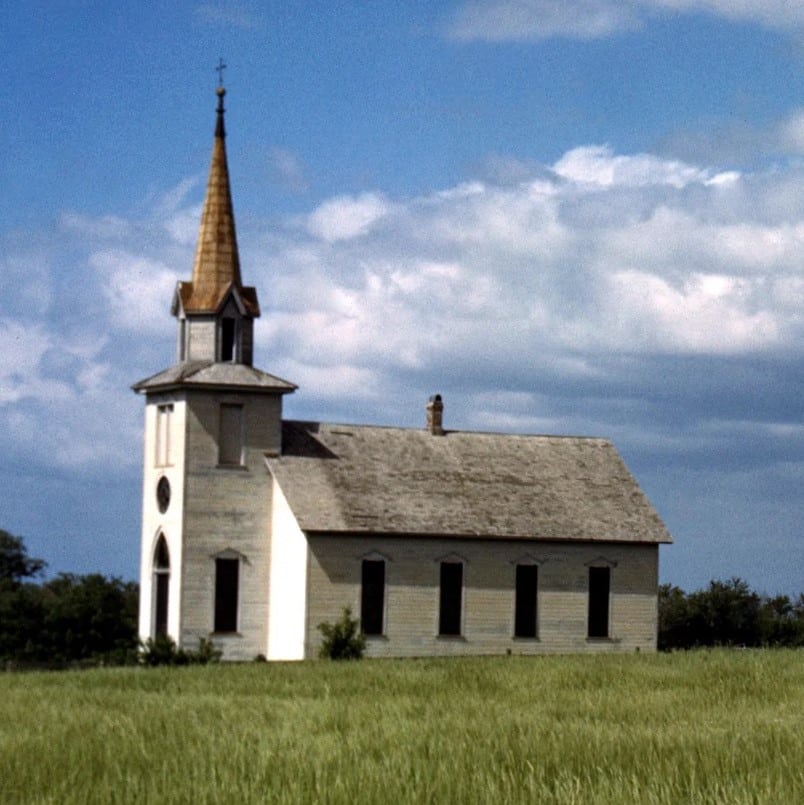
Nearly half of the country’s congregations are in rural areas (25%) or small towns (22%), while the 2020 census found that only 6% of Americans live in rural areas and 8% in small towns.
The country’s changing demographics may be key to rural and small-town decline. Young people have been moving to urban areas; businesses and industries have also left these communities bereft of resources and talent.
That doesn’t mean small churches are all going to close. Allen Stanton, director of the Turner Center for Rural Vitality at the University of Tennessee Southern, said smaller congregations need to be judged on their own metrics.
“We’re asking rural churches to be more like large and suburban churches and they’re not designed to be,” said Stanton, author of “Reclaiming Rural: Building Thriving Rural Congregations.”
Measures taken by larger churches, such as increasing the number of small groups or attracting more youth, may not be feasible in these communities, Stanton said. But these congregations can still hold their own, with part-time leaders or volunteers.
However, the FACT survey finds it’s midsize churches with an attendance of 100 to 250 that have declined the most precipitously — the median decline was 12%.
“These congregations were built in the post-World War II era,” said Thumma. “They’re struggling to have enough staff to satisfy everybody. And they don’t have all the programs of larger churches.”
Congregations with 1,500 people in attendance were best able to avoid decline; 71% of those large churches grew over the past five years. That may suggest many people are abandoning midsized congregations for megachurches that have full-time clergy, greater financial and physical resources and a diversity of ages and races among members.
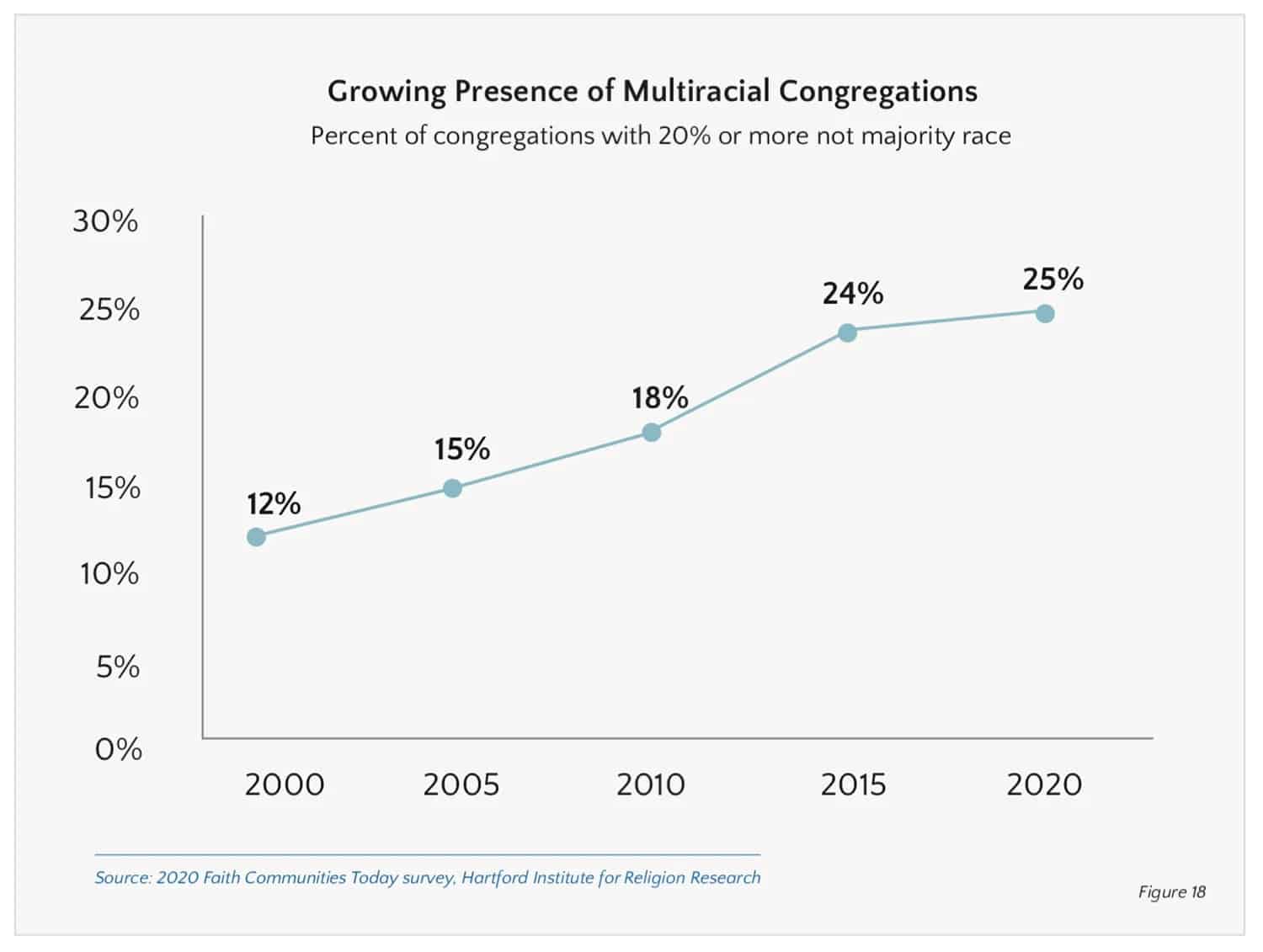
One bright spot in the study: Congregations are becoming more racially diverse. In 2000 only 12% of congregations were multiracial. In the latest survey, the figure climbed to 25%.
The survey defined multiracial congregations as those where 20% or more of participants are not part of the dominant racial group.
Many researchers are now investigating if racial diversity also equals integration in relationships — or if people are simply attending church together. Previous research has also found increased diversity is one-directional.
“It’s still in the direction of predominantly white churches becoming less predominantly white, said Chaves. “It’s very little in the other direction. There’s not a big increase in diversity in predominantly Black churches.”
 Yonat Shimron is a national reporter and senior editor for Religion News Service.
Yonat Shimron is a national reporter and senior editor for Religion News Service.

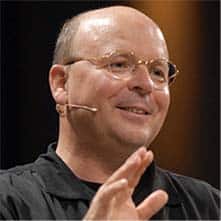


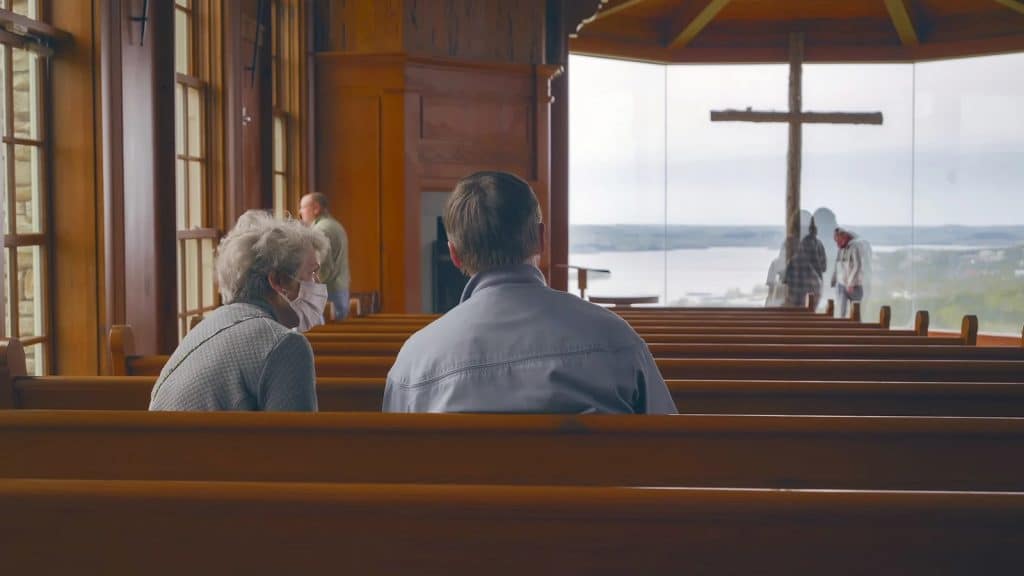

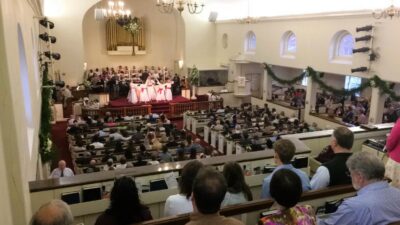

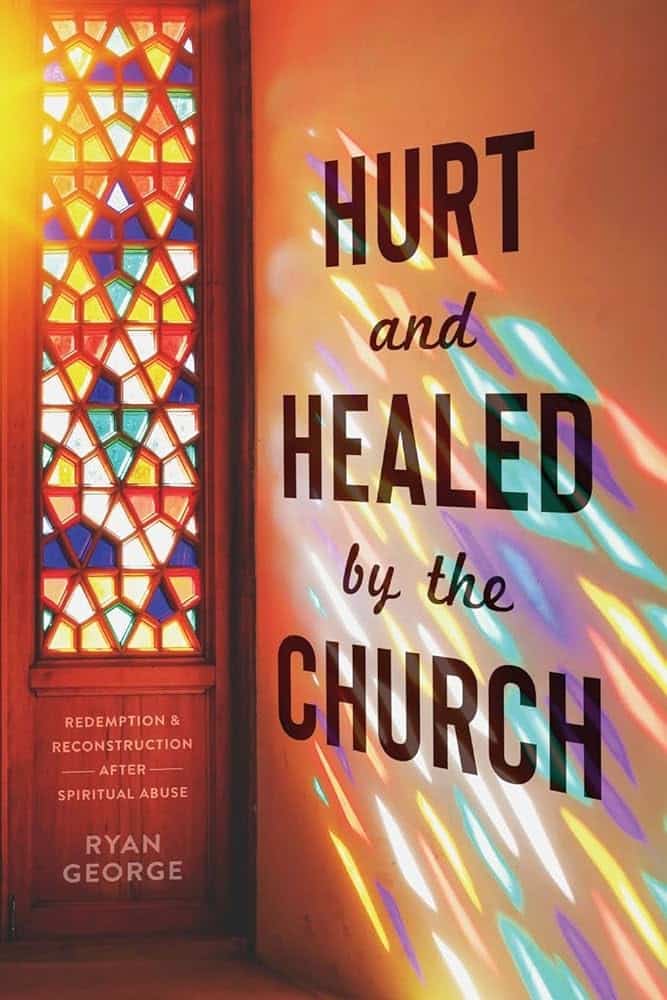











13 Responses
This shouldn’t come as a surprise since the passion has gone out of preaching, the fire, the fervency has been replaced with a God who is just like us only a little bit better. We’ve been taught to view God as now possessing a limited hatred of sin since his wrath has been satisfied with the death of Christ so nothing to do, just go on living any old way the carnal heart desires, we’re off the hook so to speak.
If someone has a medical problem or issue, then we should pray about that, but examine our inner motives, desires, habits for some personal embracing of a pet sin, well, not much specifically is said about that. Just get people saved, we’ll worry about discipleship later on, just get busy around the church, serve in some capacity, that’s all a good disciple needs to do.
Amazing, about 6 decades of our modern evangelical emphasis and we scratch our heads and are bewildered about a lack of interest in a church that can’t offer much more than the world offers even thought we’ve adopted worldly praise music that was originally intended to interest our worldly friends into an accommodating atmosphere
where once the hymns held sway. As Leonard Ravenhill once said, “As goes the church, so goes the world”.
Is it any wonder?
That’s a pretty broad brush statement. The churches and pastors that I am connected to are truly committed to preaching God’s Word and a real desire to see people follow Jesus. For one thing, we are seeing the demise of the “cultural Christian.” They have found other things to do on their weekends especially since Covid. There are a number of other factors that are playing into this as well. However, we are also seeing those who are committed to following Jesus really getting involved in serving in their churches and sharing Christ with family and friends.
If you believe all that’s needed is a little more fire and brimstone from the pulpit, you’d be sorely mistaken. The numbers are going down because the congregations are getting older and are dying off, and young people are not replacing them. I’m very surprised the survey is not tracking the average age of the congregations over the years, but it’s clear from the report that the age profile of the average congregation skews much older than the US population as a whole, and the difference is growing.
Young people have been turning away from Christianity in unprecedented numbers for the past 25 years, and regardless of the rights and wrongs of the subject matter, they’re not going to be won back by taking a harder line on preaching against sex before marriage and homosexuality (isn’t that what it always boils down to?), especially with all the scandals (sex and otherwise) in the church constantly hitting the headlines. Hypocrisy is tough to overcome.
There are many factors but one factor that few talk about (and this is certainly not confined to small churches) is churches that drive people away by ugly music. Forcing ugly music on a congregation by substituting the latest new thing for beauty is somehow considered virtuous (the theory being that some like ugly music so it might attract converts) but nobody seems to consider how many people are driven away by the ugliness after one visit and never come back to hear the gospel.
The decline is a generational one — it’s the young people who are leaving the church. You fail to explain what type of music you believe is “ugly” but I suspect you mean music aimed at a younger audience. If so, I highly doubt a return to traditional hymns and old-time gospel music as favored by the senior set is going to have the kids crowding back into the churches.
Don’t underestimate young people. Many find loud discordant amplified guitars and silly lyrics every bit as annoying as older adults do and do not like being condescended to by those assuming that they like it because of the date on their birth certificates.
If I took you to where my aunt and uncle lived in rural East Tennessee, in the 10-15 miles between their home and the edge of town, I can show you FOUR churches of the SAME denomination. None of them ran over 100 people. One I know split when the congregation moved out on the highway and they chose to stay in the old building. And this doesn’t include other denomination churches along the way.
Not surprising if congregants of all ages fail to make it to church with the following excuses.
1) The Music
2) The Weather
3) Not liking another person who goes to the same Church.
Sure, these could be casual excuses but they could also be sad reality. Music could be an excuse if it is nitpicking about not having one’s favorite song sung that week, but enduring truly horrible music week after week while church leaders smugly ignore all feedback from the congregation is another matter. As far as the weather is concerned, a little light drizzle might be an excuse but a snow storm or hurricane warnings is not. And not liking another person in the same church might be an excuse if it is a matter of finding Mrs. Somebody’s obsession with her flower garden a little boring but it is an entirely different matter if, for example, a young woman quite sensibly finds a young man’s repeated unwelcome approaches unnerving.
Maybe having a church with ‘leaders’ instead of the saints together sharing their gifts in mutuality could touch on the problem…but I guess it is how the cultural church survives: leaders, cause there are few saints.
Always fun to diagnose everyone’s problems: I’ll jump in. Banal sermons, a low bar on discipleship, no real response to the metaphysical framework of ‘grand theory evolution’ (we just hope no one notices), and slender grasp on what the kingdom of God is.
Maybe the simplest explanation is probably the closest to the truth–in a secular society where everyone has the world at their fingertips (i.e. mobile phones + Internet) the church is no longer the only game in town when young people are choosing which metaphysical framework to guide their way.
Previous generations could raise their children in the church and hand them off confident they would continue in the family faith tradition, but now the world is beating down their children’s door the moment they set foot into the online world.
But perhaps it’s even simpler than that. Maybe it’s all about sex. After all, almost nobody waits for marriage to have sex these days, even those who remain in the church. They know their parents did the same thing, and “do as I say, not do as I do” is not a winning formula, especially when you add in all their affairs, divorces, annulments, and so on.
And when it’s not about having sex, it’s about sexual politics–LGBTQ+, the role of women in society, etc.–mostly because conservative churches continues to make it all about sexual politics, specifically opposing the new societal norms the younger generations have grown up with. It’s hard for young people to reconcile the hash rhetoric from many evangelical pulpits with the reality of having friends who belong to the LGBTQ+ community.
Frankly, I don’t know where it stops. Liberal denominations are losing members at a faster lick than conservatives, so moving the church to the left on these issues doesn’t help, but staying staunchly conservative doesn’t appear to be stemming the tide either no matter how many fiery sermons about the dangers of sexual sins are preached.
Quite a conundrum.
Perhaps the challenge is to differentiate conservative as culture and conservative as biblical. Conservative as culture will die as culture ebbs and flows. Conservative as biblical, as we reflect on the depth of our own pride and other flaws and seek the KoG, will continue, as in my area where conservative as biblical thrives, conservative as culture withers. Conservative as biblical should be a constant challange to conservative as culture.